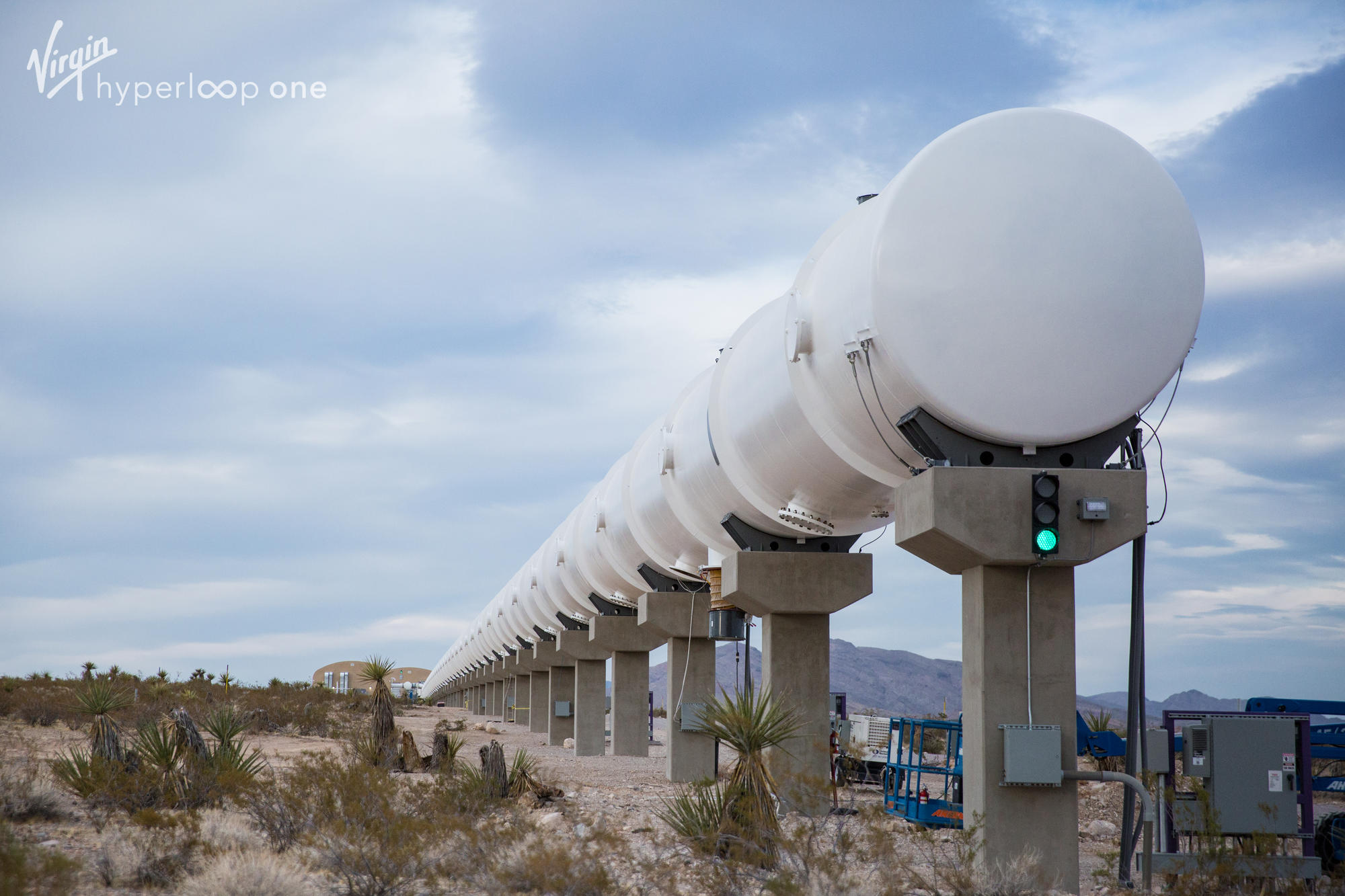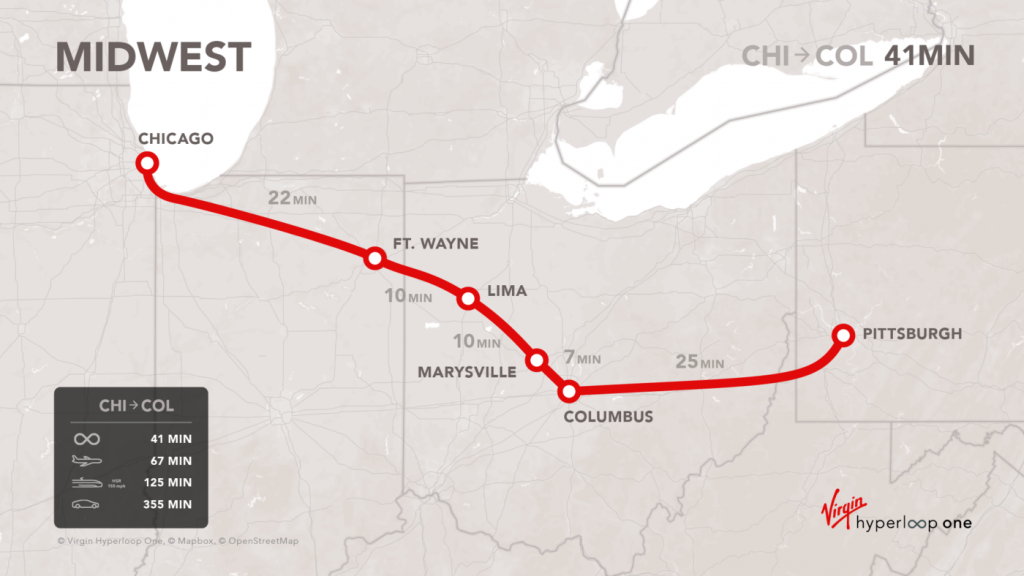Hyperloop FAQ: 10 of your most burning questions answered

If you’ve been paying attention to the news at all in the last few, you’ve probably noticed the term “Hyperloop” splashed across headlines. But, what is it, really? Is it possible to get to Chicago in about 40 minutes? If so, how would that feel as a passenger. Better yet, how much would that cost?
You’re not the only one with questions. 614NOW reached out to the Senior Public Information and Diversity Officer of the Mid-Ohio Regional Planning Commission, Bernice Cage, to get answers to some of our most burning hyperloop questions.
What is hyperloop?
Hyperloop is a new mode of transportation that moves freight and people quickly, safely, on-demand and direct from origin to destination. Passengers or cargo are loaded into the hyperloop vehicle and accelerate gradually via electric propulsion through a low-pressure tube. The vehicle floats above the track using magnetic levitation and glides at airline speeds for long distances due to ultra-low aerodynamic drag. It’s fully autonomous and enclosed, eliminating pilot error and weather hazards. It’s safe and clean, with no direct carbon emissions.
How fast is hyperloop?
We estimate that the top speed for a passenger vehicle or light cargo will be 670 miles per hour or 1080 kilometers per hour. That is 2-3 times faster than high-speed rail and magnetic levitation trains, and 10-15 times faster than traditional rail. The average speed vehicles will travel vary based on the route and customer requirements.
Is hyperloop safe?
Safety is our number-one priority and we’re designing hyperloop to be inherently safer and more reliable than maglev or high-speed rail. We have no at-grade crossings (by far the leading risk posed by trains), so there are no interactions with other forms of transport or wildlife. We are fully autonomous, so there is no driver related error. We are immune from most weather events. We will have multiple emergency braking techniques, triggering an immediate braking of the vehicle. Vehicles will have a full suite of life support systems, and we have the ability to re-pressurize the tube if needed. We strive to surpass the safety of all existing transport systems, and have a dedicated safety team to work with regulatory authorities to define and implement best practice safety protocols.
What will it feel like riding in the hyperloop?
About the same as riding in an elevator or a passenger plane. Although hyperloop will be fast, the systems we are building will accelerate with the same tolerable G forces as that of a train. With hyperloop, you will be accelerating and decelerating gradually and, depending on the route, we will incorporate banking into our designs to eliminate G-forces even more. And there’s no turbulence.
BROUGHT TO YOU BY
When will hyperloop systems be ready for cargo and passengers?
Our goal is to have operational systems in the late 2020s. Our ability to meet that goal will depend on how fast the regulatory and statutory process moves. So far, we’re seeing a very positive response from governments to our technology
How much will it cost to ride?
It’s simple – if it’s not affordable, people won’t use it. We are looking to build something that will expand opportunities for the mass public so they can live in one city with their family and work in another. Currently, that kind of high-speed transport is out of the price range for most people. An exact price will vary due to numerous factors including the route.
The feasibility study completed in Missouri concluded that riding hyperloop from Kansas City to St. Louis could be less than the cost of gas to drive.
How much energy does a hyperloop use?
Virgin Hyperloop One’s system is more efficient than other high-speed modes of transportation. High-speed rail and traditional maglev trains require power along the entire track, while the Virgin Hyperloop One system only requires energy to a portion of the track. Specific energy use will be dependent upon system requirements and the terrain, but estimates show that we could be 5-10x more energy efficient than air travel.
What is Virgin Hyperloop One?
We’re a privately-held company out to create fast, effortless journeys that expand possibilities and eliminate the barriers of distance and time. Virgin Hyperloop One systems will be built on columns or tunneled below ground to avoid dangerous grade crossings and wildlife.
Virgin Hyperloop One is developing a route from Chicago-Columbus-Pittsburgh

How much funding has Virgin Hyperloop One received?
To date, we have received over $370 million.
Has hyperloop technology been proven?
Virgin Hyperloop One is the only company in the world to have tested its hyperloop technology at scale. We completed the third testing campaign of our full-scale, full-system hyperloop on December 15, 2017. The company achieved historic test speeds of 387 kilometers per hour (240 miles per hour, 107 meters per second).
BROUGHT TO YOU BY





